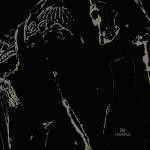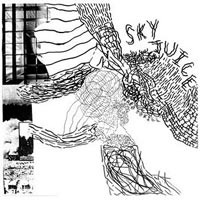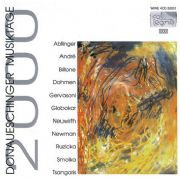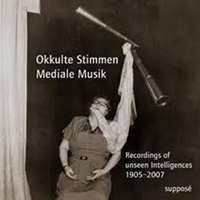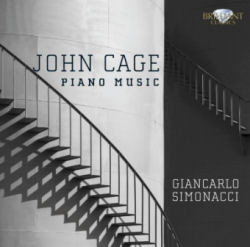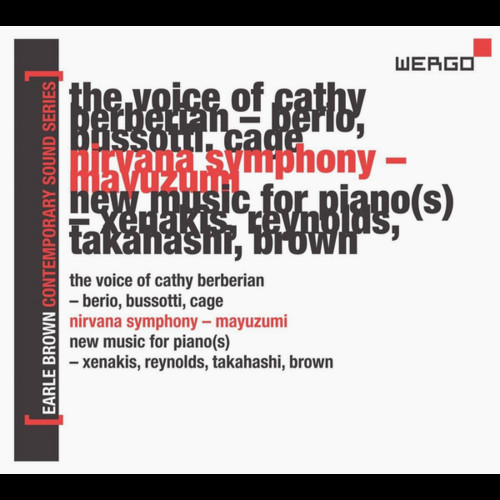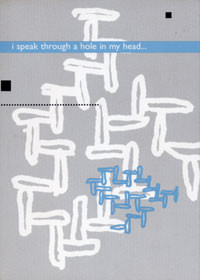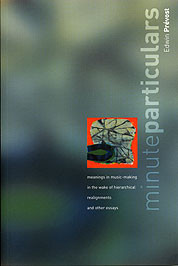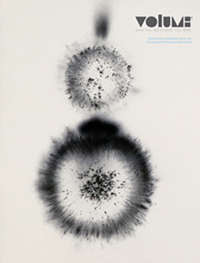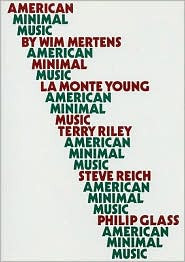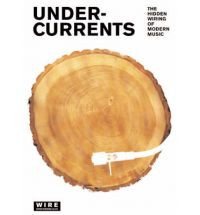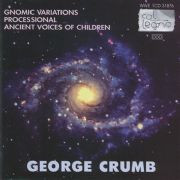Back in stock
Cairo Free Jazz Band
Restocked, few copies left: the privately pressed Cairo Free Jazz Ensemble 1st album had always been considered as a kind of legendary album, difficult to find (Hartmut confirmed to me that it was pressed in Egypt in only 200 copies)... here are available for the 1st time ever the sole other recordings left of this mythical Ensemble ! it all started with Salah Ragab & the Cairo Jazz Band playing jazz standards and new compositions in the end of the 60's... then, with the arrival of Hartmut, they…
Jealousy And Diamond
Kranky manage to sieve through the muck and pluck out another breathtaking album, the debut from Autistic Daughters - a collaboration between Dean Roberts, Werner Dafeldecker and Martin Brandlmayr (Radian). Those of you out there (and there are many) who revere Talk Talk’s ascent into heavenly climes with their “Laughing Stock” and “Spirit of Eden” albums will immediately find themselves seduced by this project’s wondrous effervescence. Except whereas Talk Talk emerged from a pop-focused univers…
Static
Improvising drone-rockers Bad Statistics hail from Wellington, New Zealand, hurling Nordic doom, kraut rock and feral skronk into an industrial blender, and delivering a noisy, prolonged earful of lethargic experimental nonsense. Vocalist and saxophonist Thebis Mutante sounds like Mark E. Smith with stomach ache on 'If I Were A Pint Of Milk', groaning and whinging his way through a moribund death rattle of a song, seeing out a twenty-one minute duration that feels approximately four times as lon…
above the law
above the law is a 1988 action film directed by andrew zachariah davis, probably best-known for being the film debut of steven seagal. this tribute album features the full sky juice rock band lineup of s.j. jackson, s.j. jones, stoney freeman, & zac davis and was recorded between 2004 and 2008 in various ohio / michigan / massachusetts basements. except for "electric engram" which is excerpted from an infamous/aborted live radio broadcast on chicago's legendary dance station wgci.
Mag Magazin 6
Obscure early tape, very thought to find nowadays: this tape is rich with texture and dynamics that make for a stunning listen, its details are intricate resonation and transformations of the sound sculptures in the environment
23 Standards Quartet
This 4-CD set (4.5 hours of music) was recorded during a series of concerts in 2003 by Antony Braxton's quartet featuring Kevin O'Neil on guitar, Kevin Norton on percussion, Andy Eulau on bass and Anthony Braxton on saxophone. Here they perform standards. Personnel: Anthony Braxton (saxophone); Kevin O'Neil (guitar); Andy Eulau (bass instrument); Kevin Norton (percussion). Recording information: 2003.
Donaueschinger Musiktage 2000
The annual collegno offering from the Donaueschingen Music Festival, for the millennium year2000, runs to 4 CDs and just under 5 hours of new music, for combinationsranging from a straightforward string trio, to 4 soloists, 4 ensembles, andlive electronics! All the works areperformed 'live', and all are world première performances, so that this set,with its illuminating notes by each of the 11 composers, constitutes aninvaluable historical document.
Okkulte Stimmen - Mediale Musik: Recordings Of Unseen Intelligen
This 3cd boxset is a fantastical document of parapsychological research throughout the 20th Century, with recordings of purported demonic possession, glossolalia, precognition, poltergeists, and the already well documented Electric Voice Phenomenon. The latter had been the subject of research by noted parapsychologists Raymond Cass and Freidrich Jurgensen, whose work was collected on several cds released on the Touch label, one of which was the AQ perennial favorite The Ghost Orchid. The first d…
Piano Music
JUST ARRIVED, awesome and low priced essential triple CD set with the piano compositions by John Cage (1912–92) regarded as one of the most influential and controversial composers of the 20th century. It is not only his music that this reputation is based on – his ideas were revolutionary, and he cast doubt on the supremacy of European art and music, when it was unchallenged and such views were considered heretic. Cage rejected the status held by harmony, instrumentation and even the devel…
The Cosmological Eye Trilogy
They call their home studio the Space Room; they name their pieces after galaxies and nebulas; and their cat appears to be an alien. Please act surprised when you learn that this duo from Torino, Italy, plays space music -- not your ordinary brand, though: experimental space music. Maurizio Opalio and Roberto Opalio are exploring the cosmos through epic improvised journeys involving astral percussion, electric astral guitar drones, and space toys. Their territory is somewhere past the fringes of…
Earle Brown Contemporary Sound Series Vol. 3
Wergo presents the third volume of the Earle Brown Contemporary Sound Series. Recorded between 1960 and 1973, the original LPs from which these CDs were taken have long been collector's items. These rare and historically important recordings of international avantgarde music have been carefully digitized and remastered by the Earle Brown Music Foundation. The series presents the extraordinary world of contemporary and avant-garde music that fl ourished in Europe, the United States, Latin …
Der Meister und Margarita
It is in itself a brilliant achievement to transform this complex religious-philosophical satirical novel from 1930s Moscow into a spellbinding opera. And each setting is imbued with its very special local color, whether it's Satan's ball, the asylum, the evil apartment, or the Place of the Skull: "Höller underpins, surrounds, conveys or impedes the sung and spoken parts by a dramatic theater music of powerful images and driving force, making use of the orchestral range of sounds both moderately…
I speak through a hole in my head...
the series of texts was originally spoken improvisationally into a micro cassette recorder while driving to and from my studio in 1988. nothing was written down or planned before i pressed 'record'. the entire work is printed here. unedited and in the order spoken. the periods mark the ending of each recorded segment. some of the pieces are responses to things seen and some are about speaking, and the sounds of words. i would suggest not only a mental reading, but a verbal one as well.the drawin…
Minute Particulars
In 177 pages Eddie Prévost includes twenty-nine thought-provoking essays on ideas, perceptions, reactions and the practices of improvised music, as well as a short index. Reactions to the real world - in particular, the political, corporate and commercial ones - are never far from the surface and the place of the individual is mirrored through that of the musician developing his or her own position, responsiveness and voice in a group context. Discourses include the questioning of terminology su…
N° 1
“Bilinguage (english-french). First issue of the contemporary art journal about sound, devoted to the complex relationships between visual and sound forms, both in contemporary art and history.Featuring: analysis (“A Brief History of Sound Art” by Rahma Khazam; “Sound Art, a Fortified Art” by Bastien Gallet; “Notes on Steve Reich's Pendulum Music” by Christophe Gallois; “A Formless Form” by Mathieu Copeland; “Sound in Artist's Films” by Alexandre Castant, etc.) / “focus” on Philippe Decrauzat's …
As loud as possible: the noise culture magazine - 1
As Loud As Possible is a dense, perfect-bound UK-based magazine that debuted in late fall of 2010 to explore Noise music and culture with articles, interviews and reviews with both seminal and newly emerging sound artists that specialize in atonal sonic brutality. With ear-splitting frequencies and crumbling avalanches of layered sound, harsh noise is a provocative brand of sound art that frequently fascinates as much as it alienates. But in defence of this raging racket, I will say that Noise i…
American Minimal Music
The first book which deals in depth with the school of American repetitive music, better known as minimal music. The author discusses in detail the work of La Monte Young, Terry Riley, Steve Reich and Philip Glass and places them in the tradition of Western music. Minimal music thus emerges as the latest stage in a development leading from Schoenberg, Webem, Stockhausen and Cage.Considering the philosophical thinking of Deleuze and Lyotard, the representatives of the so-called French 'libidinal …
Undercurrents The Hidden Wiring of Modern Music
The Wire magazine has come to be known as the authoritative source on modern music. This collection of essays springs originally from the Undercurrents, and subsequently, the Tangents series of articles that were “thinkpieces” based on 12 basic themes or forces that have and continue to shape modern music. The 19 essays, broken into 4 categories: electrification, occultism, mechanism and freedom, were contributed by some of the most prominent modern music writers and offer insight into ideas a…
Gnomic Variations / Processional / Ancient Voices of Children
On reading the title Gnomic Variations, lovers of piano music might fancy themselves to be in a kind of "Grieg's World," but the truth is far from it: the title of the piano solo, completed in 1981, does not refer to any thieving Irish gnomes but solely to the conciseness of the structure of the work. "Gnomic" here means expressing an idea in brief words, or, simply, describing a maxim as accurately as possible. The Gnomic Variations consist of three parts, comprising a total of 18 variations. A…
Darmstadt 2004
The "devil's organist" in action: if you really want to know what the "Queen of Instruments" is all about, make sure to experience Wolfang Mitterer play it live.Mitterer's organ event at Darmstadt in 2004 included not only works for organ solo but also synthetic sounds. In the piece mixture V (1995) he adheres to the principle indicated in the title, the mixture, in various respects – on the one hand in terms of organ technique and sound, on the other hand by his way of combining organ and elect…


